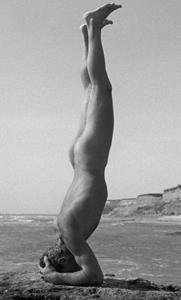Kashmir Shaivism, Part 2

PART 2
The Kashmiri Shaivite Literature is divided into three main divisions: Agama Shastra, Spanda Shastra and Pratyabhijna Shastra.
Agama Sastra includes the works considered of divine inspiration, particularly in the Shaiva Agama literature, including the Shiva Sutras a work of capital importance attributed to the sage Vasgupta or to his disciple Kallata (about 850-900).
This work develops the principles of Shiva Sutras. The main components of Pratyabhijna Shastra are Shiva Drishti, work of Vasuguptas disciple, Somananda and Pratyabhijna Sutra belonging to Utpaladeva (about 900-950).
After this, and parallel to it have developed other spiritual lines, of which we mention Kula and Krama.
Moreover, the Kashmir Shaivism can be understood only if one goes thoroughly through all its facets, because in truth it is said: “The mind is seen as a hierarchic (krama) family of agents (kula), which perceives spontaneously the true Self (pratyabhijna), with a creative power that can be perceived as pulsatory (spanda)”.
Abhinavagupta (about 950-1000) is probably the most prominent figure of the Kashmir Shaivism, as he wrote almost 40 works including Tantraloka, a comprising text on the Agama Shiva philosophy and ritual.
Kashmir Shaivism established as an important philosophical school due to the bright encyclopaedic works wrote by this great sage. The Kashmir Shaivism offers a rich and detailed understanding of the human psychic and a clear and distinct path on Kundalini-siddha-yoga as a path of self-realization.
Along its history, the tradition produced many siddhas, adepts of a remarkable depths and force. It is said that Abhinavagupta himself after finishing his last work on the Pratyabhijna system, entered into Bhairavas cave, next to Mangam locality together with 1200 disciples, just to disappear afterwards with them.
This Shaivite system is intensely monistic. It does not deny the existence of a personal God or of other gods. Nonetheless, it emphasises the practitioners personal meditation and reflexion and on his guidance by a guru (master).

The creation of the world and of the individual soul is explained as abhasa, Shivas quickening outside himself, in his dynamic aspect of Shakti, as as impulse, as vibration named spanda.
As Self of everything, Shiva is immanent and transcendent at the same time, and through his shakti he performs the five actions of creation, preservation, resorbtion, revelation and occultation.
The Kashmir Shaivism is not interested in worshipping a personal God, as it is attracted towards reaching the transcendental state of shivaic consciousness. As an esoteric, contemplative path, the Kashmir Shaivism also embraces jnana (knowledge) and devotion (bhakti).
The spiritual practice, sadhana, leads to the assimilation of the object, the universe, until the Absolute Self (Shiva) is revealed as being one with the universe.
The supreme purpose, freedom from bonds is sustained recognition (pratyabhijna) of the true individual self as being nothing else but Shiva.
There is no sinking of the individual self into God, since essentially they are one. There are three paths (upaya), stages of attaining the supreme consciousness. They are not sequential, but they depend upon the adepts level of evolution.
The first of them is anavopaya, which corresponds to the regular level of adoration, yogic effort and purification through the control of the breath. The second is shaktopaya, the preservation of a constant consciousness focused on Shiva through discrimination.
The third stage is shambhavopaya, in which the adept attains instantaneously the supreme consciousness through his or her unbending will or through the simple fact that the guru indicates the identity between himself or herself and Shiva.
There is also a fourth path, anupaya, “without means”, which consists in a mature recognition of the Self. On this path, nothing needs to be done, attained, or fulfilled, except for remaining in ones own being, which is Shiva.

The realization depends on sadguru, whose grace is the flower that crowns the sadhana (spiritual practice). Despite many renowned masters, the geographic isolation of the Kashmir valley and the late Muslim domination are responsible for its not so spread fame.
Relatively recently, modern scientists have brought to light the scriptures, publishing some of the surviving texts. Swami Lakshman Joo represented the original tradition (parampara).
Today, the various organizations from around the world promulgate the esoteric teachings of Kashmir Shaivism, all over the world. While the formal adepts of the school exist in unknown numbers, the Kashmir Shaivism remains an important influence in India.
Many adepts of the Kashmir Shaivism have left the war-tormented valley to find a new residence in Jammu, New Delhi and other places in northern India. This diaspora of Shaivite learned men serves still at the spreading of the teachings in new areas.































